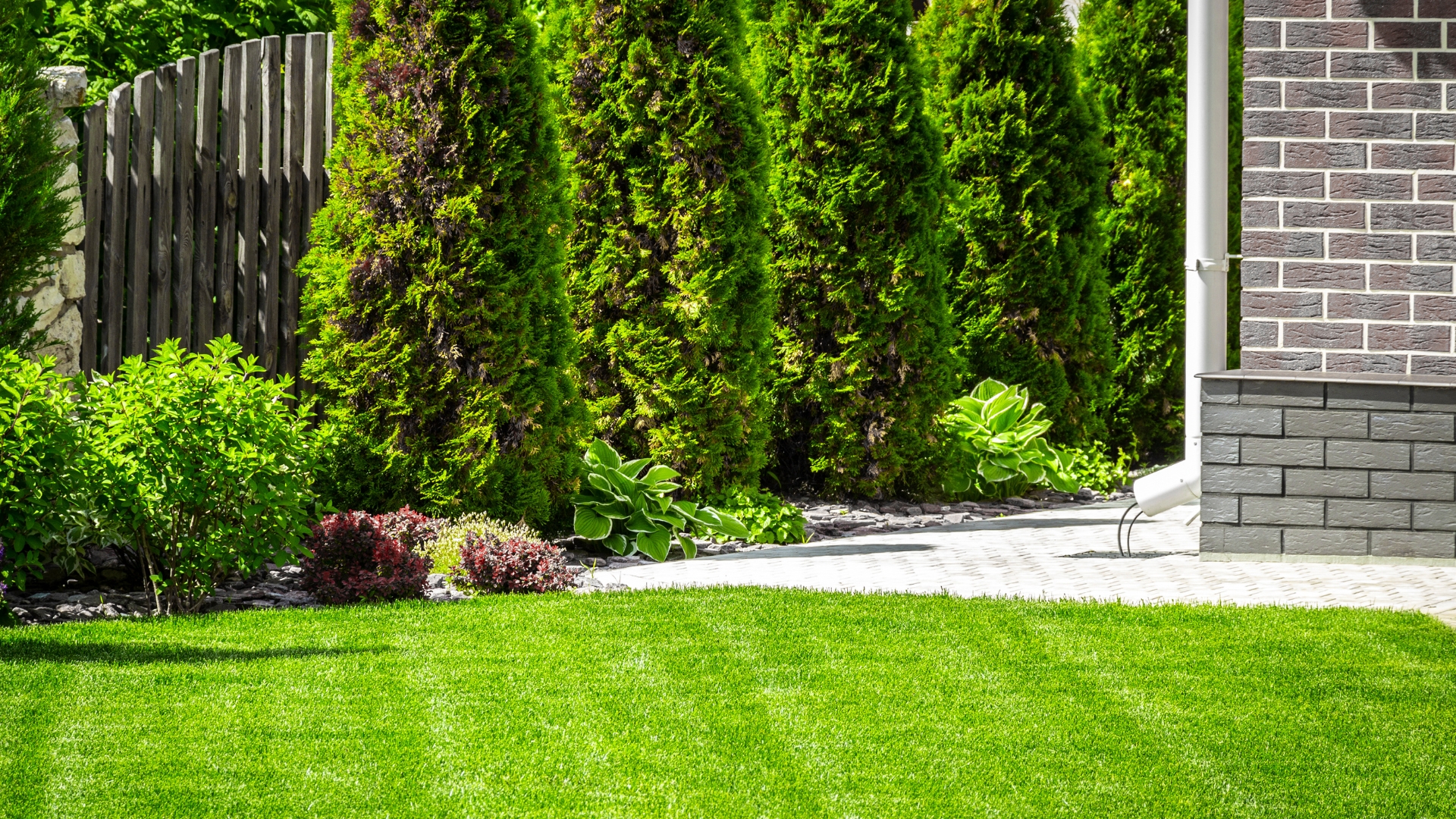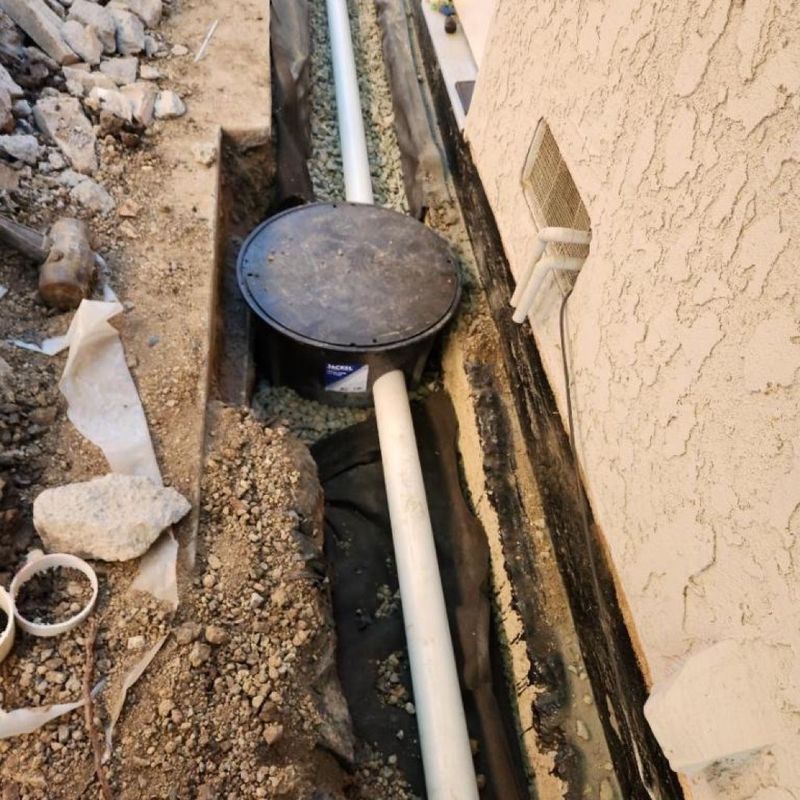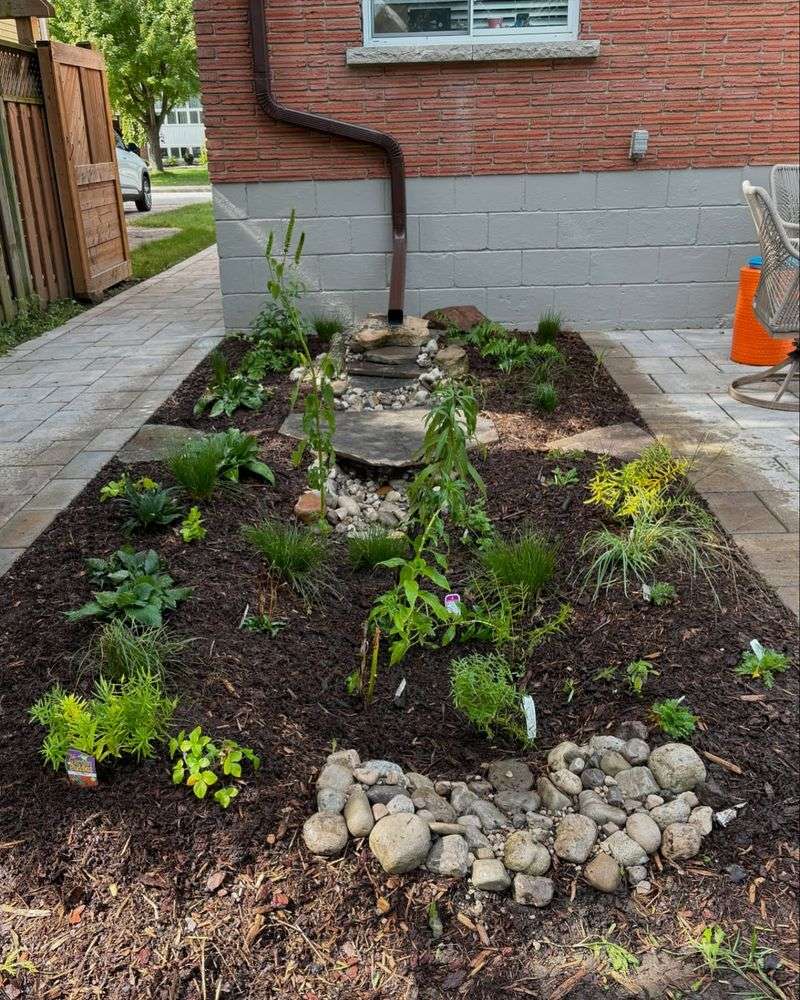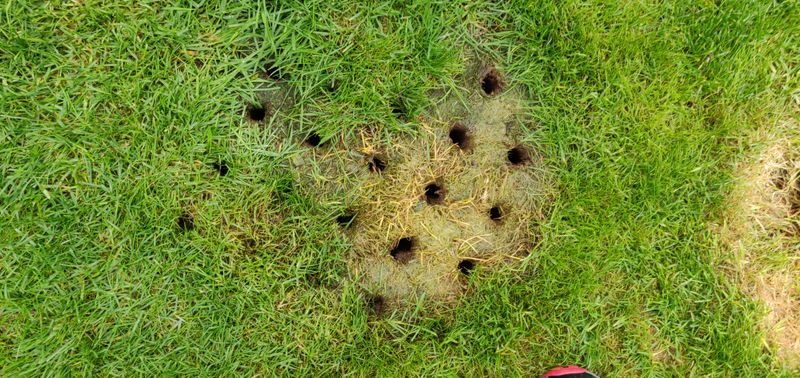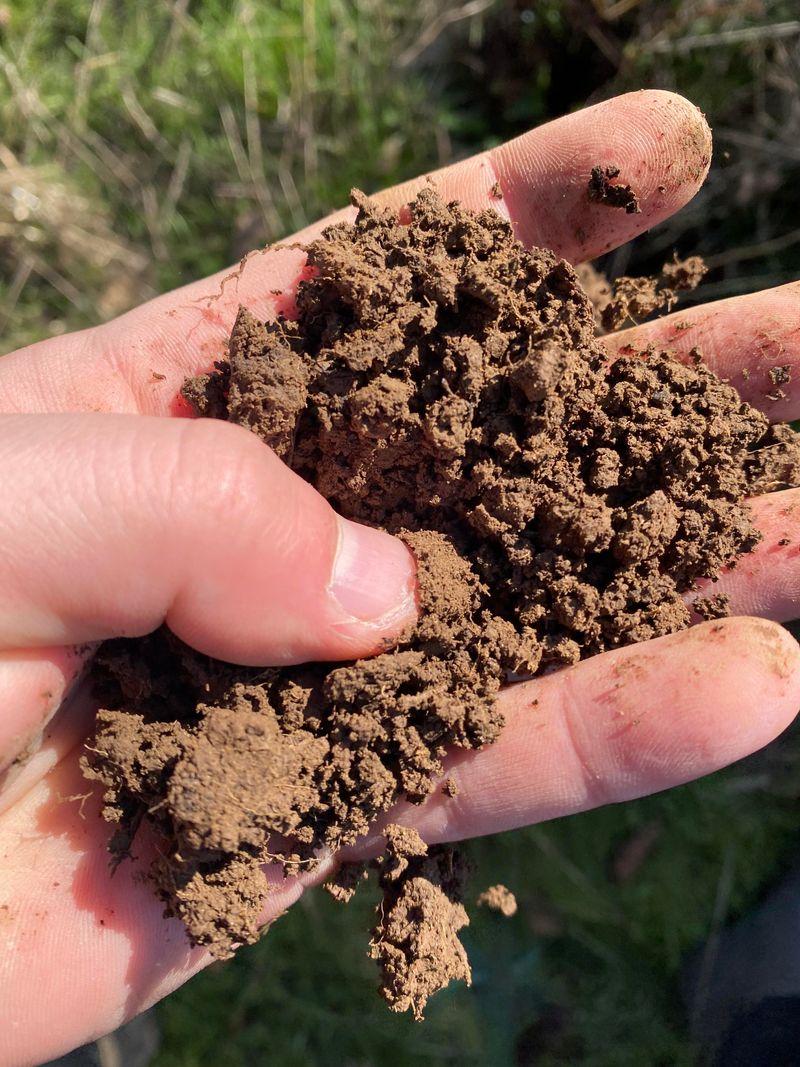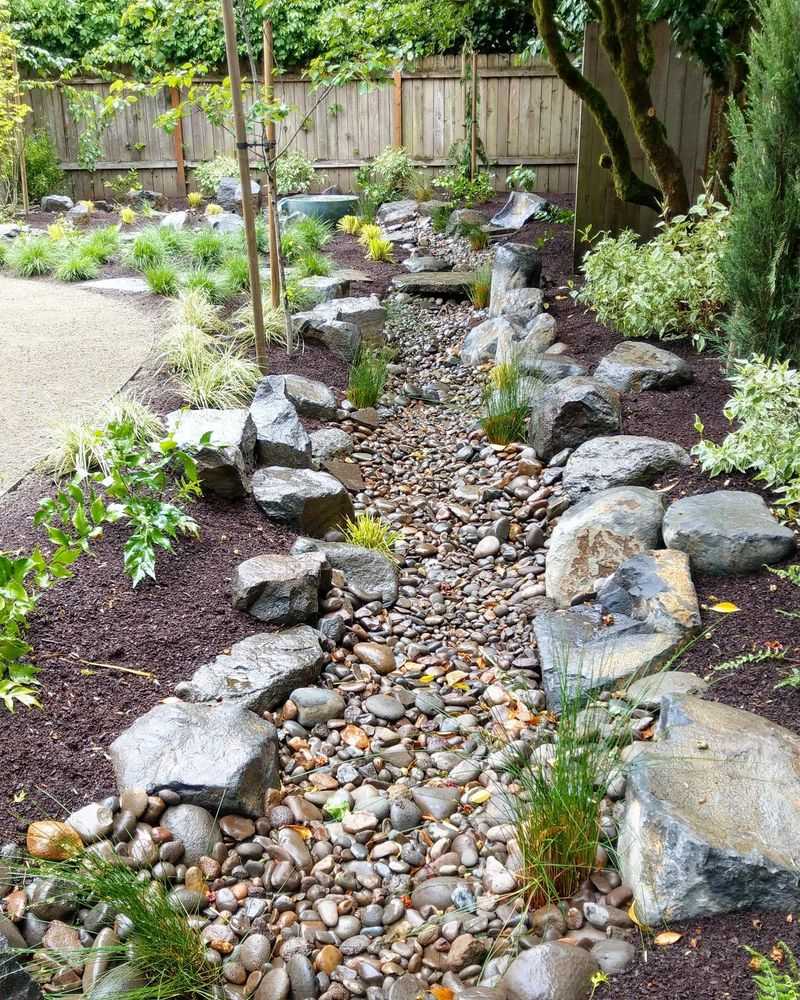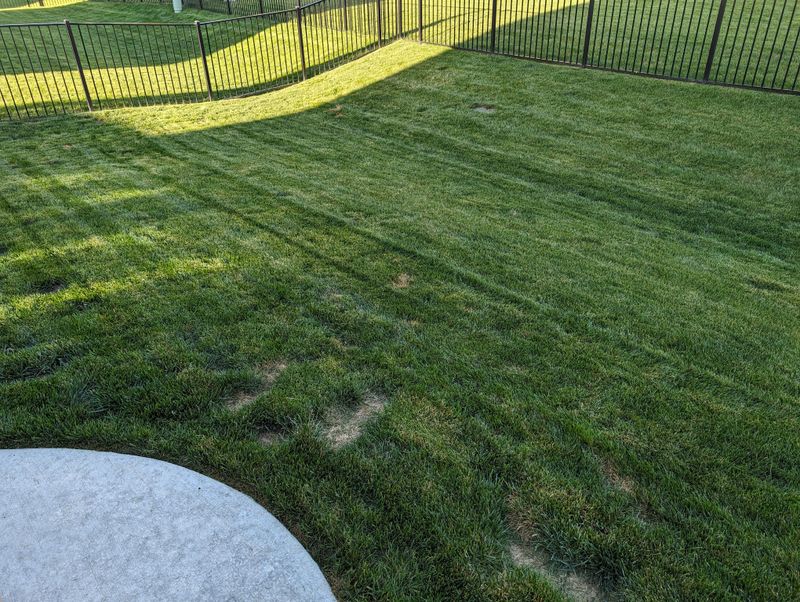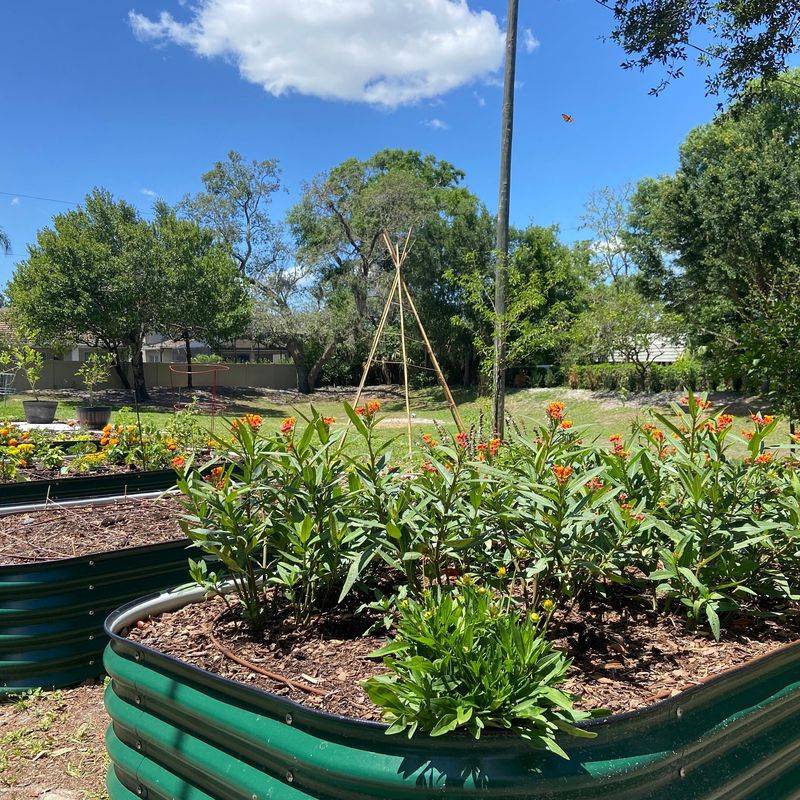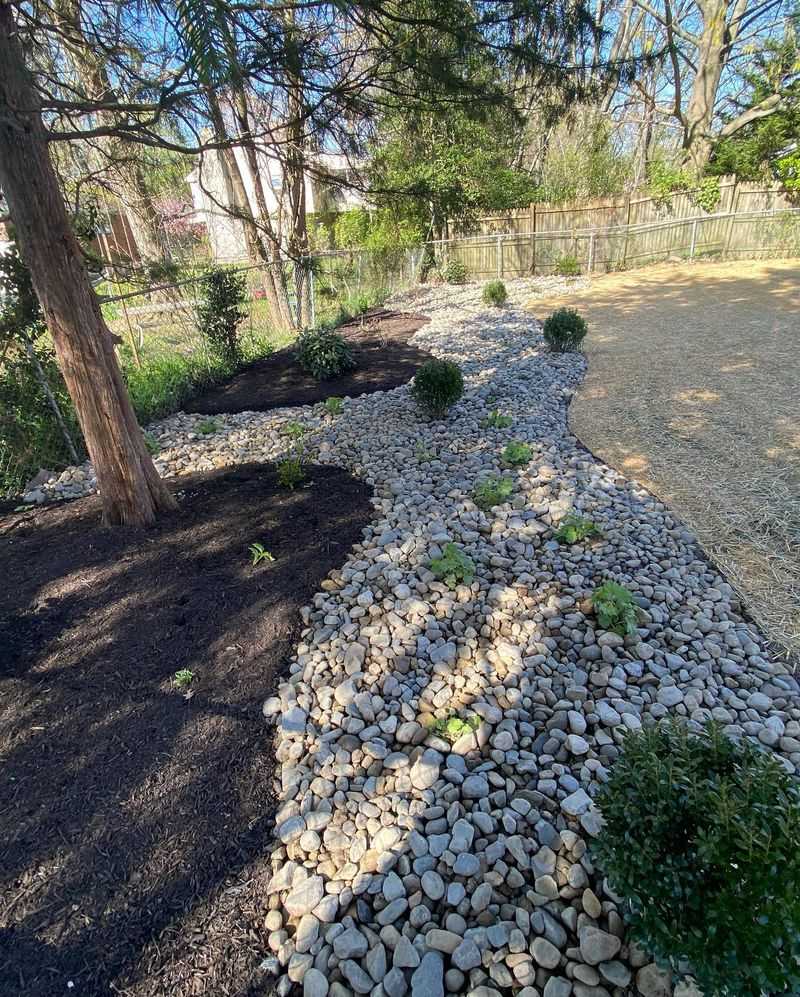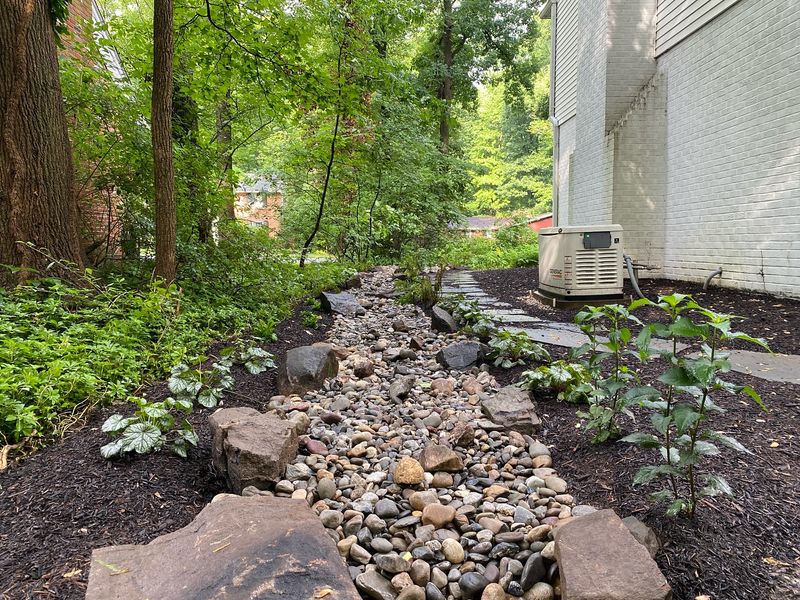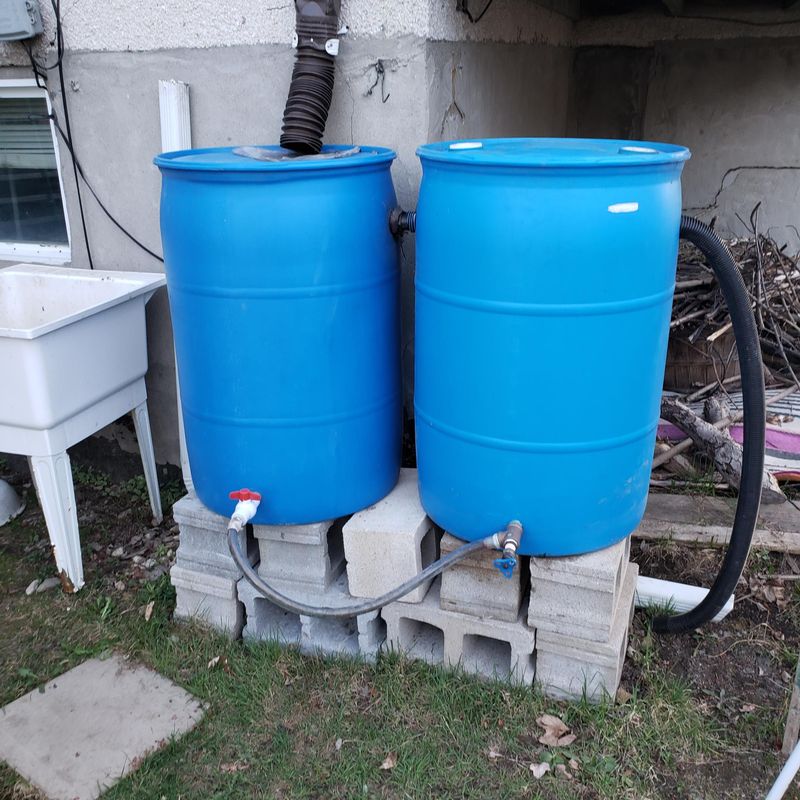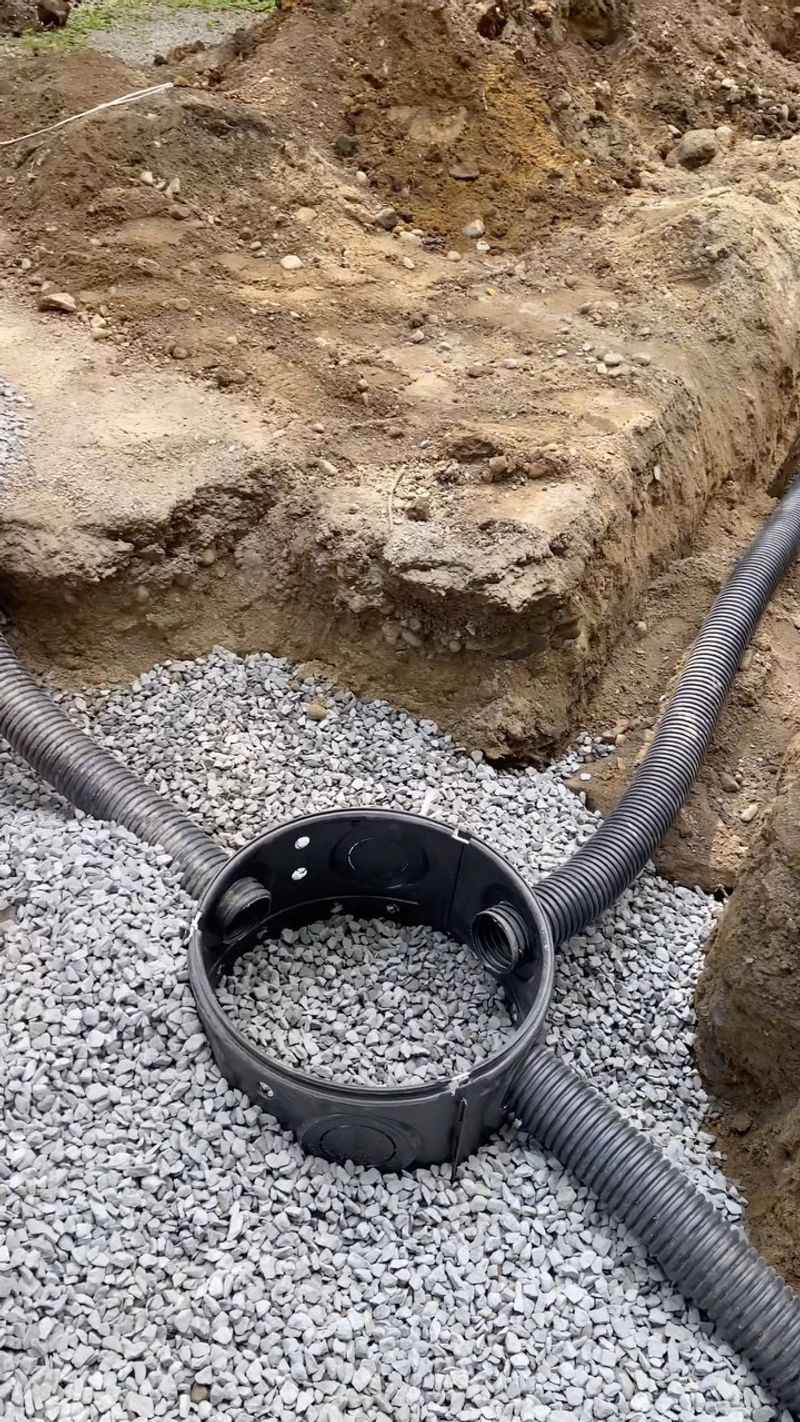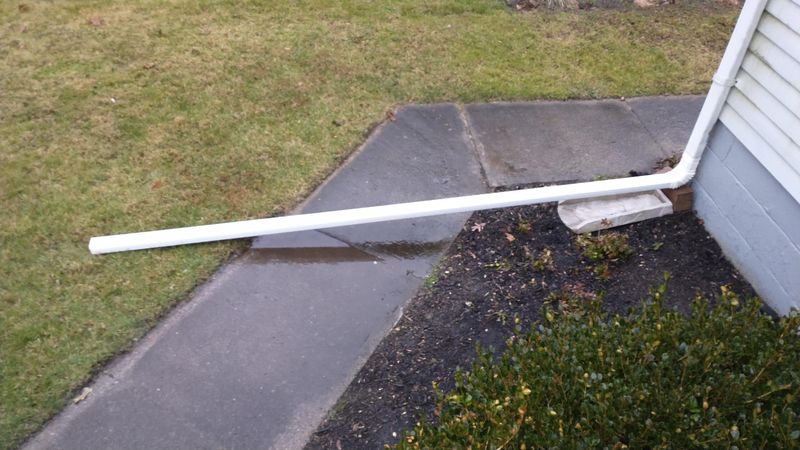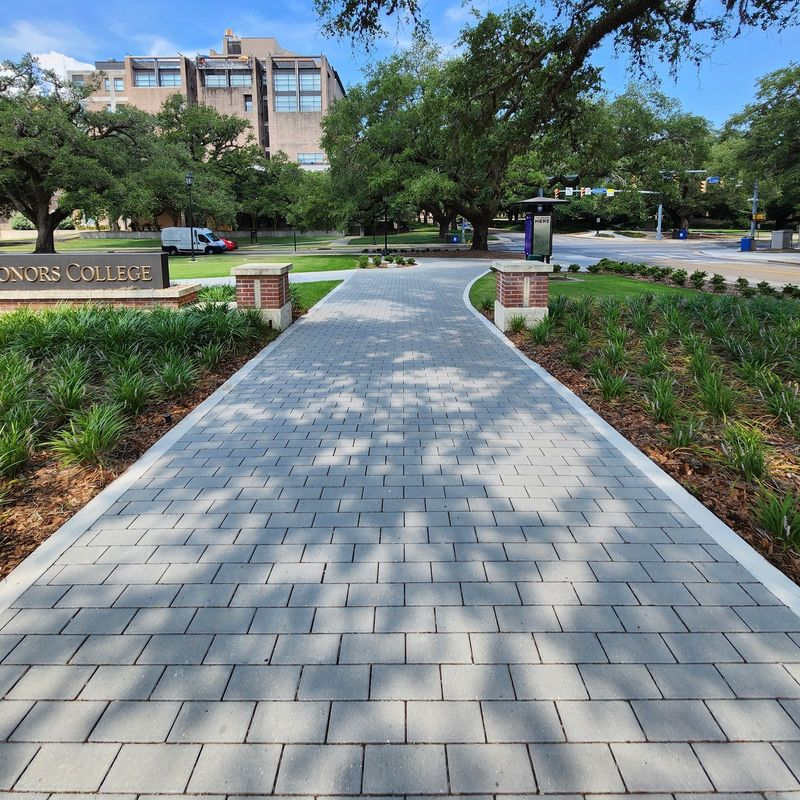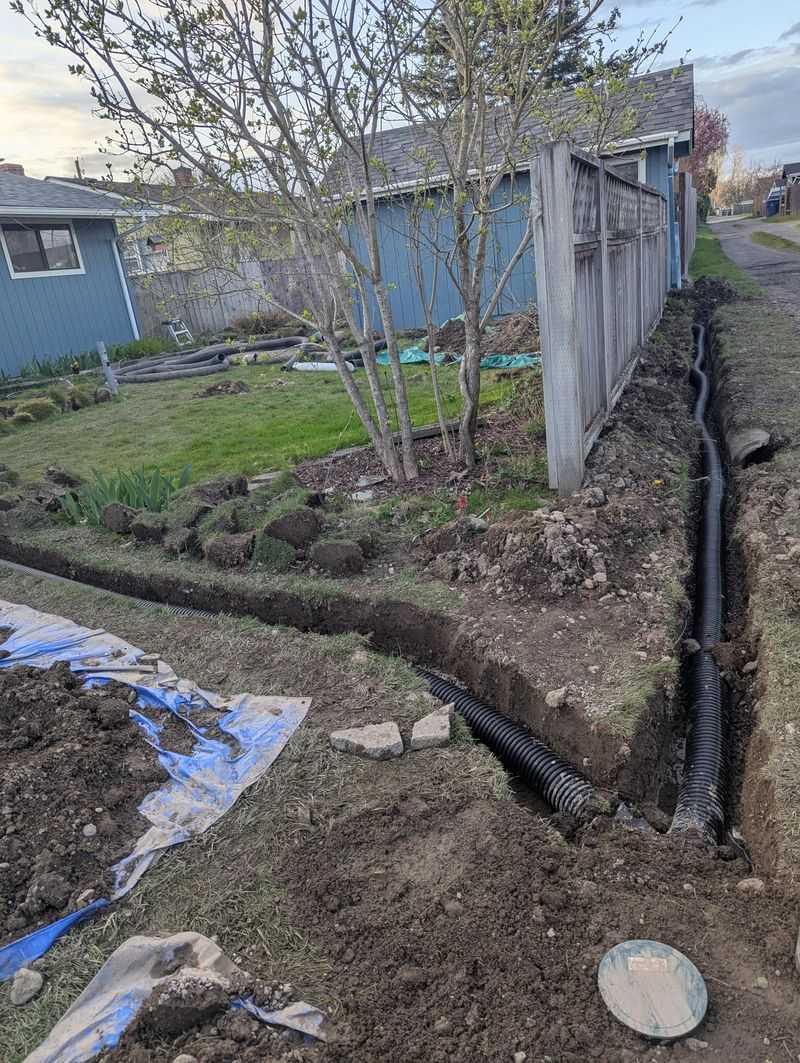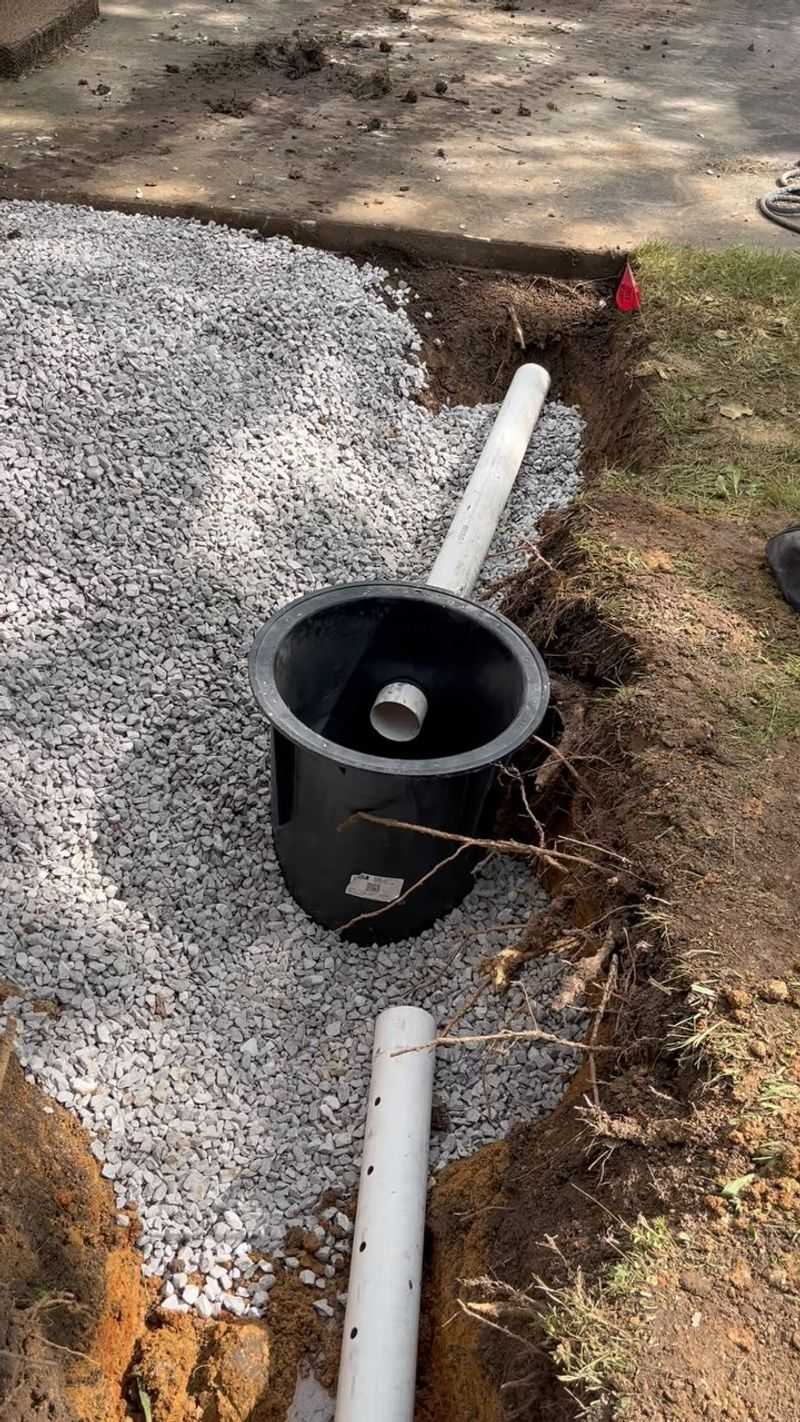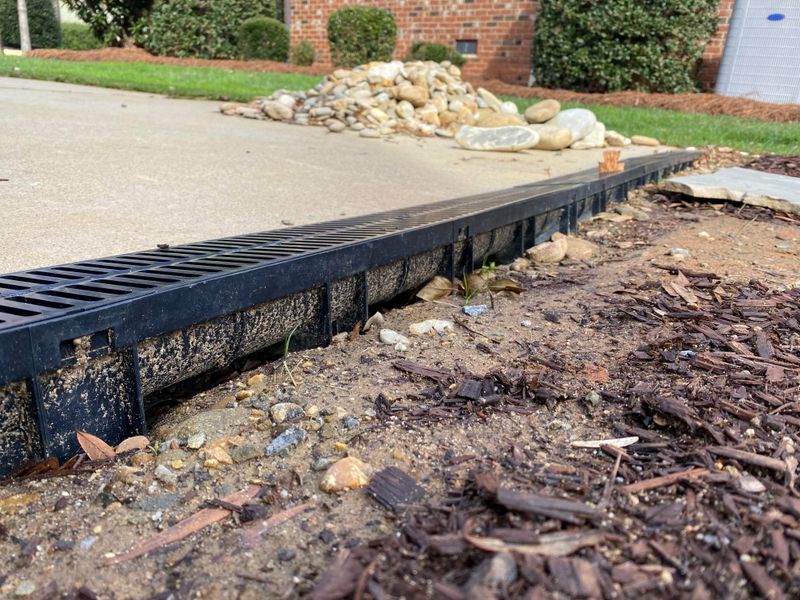A soggy yard can turn your favorite outdoor spot into a muddy mess—trust me, I know the struggle. After a few soggy disasters, I found some smart fixes that actually work to drain the water and keep things dry.
These tricks aren’t complicated or expensive, just practical ways to save your lawn from turning into a swamp. With a little effort, you can enjoy your yard no matter what the weather throws at you.
Let’s get that soggy mess under control for good!
1. Install French Drains
French drains work like underground rivers, channeling excess water away from soggy areas. They consist of gravel-filled trenches with perforated pipes that collect and redirect water to a better drainage point.
Installation requires some digging, but the results are worth it. Once in place, these hidden drainage systems work silently beneath your lawn, keeping the surface dry even during heavy downpours. French drains can last for decades with minimal maintenance.
2. Create a Rain Garden
Rain gardens are beautiful solutions that transform problem areas into features. By planting water-loving native plants in a slight depression, you create a natural sponge that absorbs runoff and prevents pooling elsewhere.
The deep roots of these specially selected plants help water penetrate deep into the soil. Besides solving drainage issues, rain gardens attract butterflies and birds, adding life to your yard while reducing maintenance needs compared to traditional gardens.
3. Aerate Your Lawn
Compacted soil is often the hidden culprit behind poor drainage. Aerating creates thousands of small holes that allow water to penetrate deeper instead of pooling on the surface. You can rent a core aerator from most garden centers for a weekend project.
The best times to aerate are spring and fall when grass is actively growing. After aerating, your lawn will absorb water more efficiently, and grass roots will grow stronger and deeper, creating natural channels for water movement.
4. Add Organic Matter to Soil
Heavy clay soil is notorious for poor drainage. Mixing in organic matter like compost creates spaces between soil particles where water can flow and be absorbed. Start by spreading 2-3 inches of compost over problem areas.
Work it into the top 6 inches of soil using a garden fork or tiller. This simple amendment improves both drainage and soil fertility. Your plants will develop stronger root systems, further enhancing the soil’s ability to manage water effectively.
5. Install a Dry Creek Bed
Dry creek beds turn drainage problems into landscape features. These decorative channels lined with river rocks and boulders direct water flow while looking completely natural. During dry periods, they’re attractive landscape elements.
When it rains, they spring into action, channeling water away from problem areas. The varying sizes of stones slow water movement, preventing erosion. Add water-loving plants along the edges for a finished look that blends perfectly with your yard.
6. Add a Swale
Swales are shallow, sloped channels that redirect water away from problem areas. Unlike dry creek beds, they’re typically grassed over, making them nearly invisible in your lawn. The gentle slope moves water without causing erosion.
Creating a swale requires careful planning to ensure proper water flow. Once established, these subtle landscape features blend seamlessly with your yard while efficiently moving hundreds of gallons of water during rainstorms. They’re particularly effective for larger properties.
7. Raise Your Planting Beds
Raised beds solve drainage issues by lifting plants above wet soil. Build simple frames from wood, stone, or concrete blocks, then fill with well-draining soil mix. Plants thrive in these elevated environments, safe from soggy conditions.
Beyond solving drainage problems, raised beds warm up faster in spring and are easier to maintain. The clearly defined spaces also add structure to your landscape. For vegetable gardens especially, raised beds can transform a waterlogged area into productive growing space.
8. Re-grade Your Yard
Sometimes the simplest solution is adjusting your yard’s slope. Proper grading ensures water flows away from your home and problem areas. This project may require professional equipment for larger yards or significant grade changes.
The ideal slope moves water gently without causing erosion. Even a 2% grade (dropping 2 feet over 100 feet of distance) can dramatically improve drainage. While potentially the most labor-intensive solution, re-grading offers permanent results that work with natural water flow patterns.
9. Use Grass Alternatives
Some areas are simply too wet for traditional lawns. Consider moisture-loving ground covers like creeping Jenny or marsh marigold that thrive in damp conditions. These plants turn problem areas into features while absorbing excess water.
Native sedges and rushes are particularly good choices, as they’ve evolved to handle local conditions. Beyond solving drainage issues, these alternatives often require less maintenance than traditional grass. They can also provide habitat for beneficial insects and small wildlife.
10. Install a Rain Barrel System
Capturing roof runoff before it hits your yard reduces the volume of water causing soggy spots. Rain barrels collect water from downspouts, storing it for garden use during dry periods. Modern designs are attractive and integrate well with landscaping.
A single inch of rain on a typical roof can yield hundreds of gallons of water. By capturing this runoff, you’re solving two problems at once – reducing yard flooding and harvesting free water for future use. Multiple barrels can be linked for increased capacity.
11. Add a Dry Well
Dry wells are underground reservoirs that collect excess water and slowly release it into surrounding soil. They’re perfect for areas where surface drainage solutions aren’t practical or attractive. Installation involves digging a hole and filling it with gravel or a prefabricated container.
The beauty of dry wells is their invisibility – once installed, they’re completely hidden underground. They work particularly well at the end of downspouts or drain pipes, managing large volumes of water during heavy rains without creating visible changes to your landscape.
12. Extend Downspouts
Often, the simplest solutions work best. Extending your downspouts moves roof water away from your foundation and wet areas. Inexpensive downspout extensions can carry water 5-10 feet away, making a huge difference in yard moisture levels.
For a cleaner look, consider buried downspout extensions that empty into a dry well or pop-up emitter. These hidden systems effectively move water while maintaining your landscape’s appearance. The relatively low cost and easy installation make this an excellent first step for most homeowners.
13. Use Permeable Pavers
Replace solid concrete patios or walkways with permeable pavers that allow water to filter through rather than run off. These specialized pavers have small gaps filled with fine gravel or sand that water can penetrate while still providing a solid surface.
The water collected moves through layers of differently sized stone beneath, eventually reaching the soil below. Besides improving drainage, permeable pavers reduce heat island effect and often look more attractive than solid concrete. They’re perfect for patios, walkways, and even driveways.
14. Apply Gypsum Treatment
Heavy clay soils benefit from gypsum applications that break up compacted particles. Unlike limestone, gypsum doesn’t change soil pH while improving structure. Apply at a rate of 40 pounds per 1,000 square feet, then water thoroughly.
The calcium in gypsum replaces sodium in clay soils, helping particles separate and create pathways for water movement. Results aren’t immediate – it may take several months to see improvement. For best results, combine with aeration and organic matter amendments.
15. Install a Sump Pump System
For severe drainage problems, consider a sump pump system that actively removes water. These systems include a collection basin and pump that moves water to a designated drainage area away from problem spots. While more complex than passive solutions, they’re highly effective.
Modern sump pumps are quieter and more reliable than older models. Some include battery backups for operation during power outages. Though typically associated with basements, outdoor sump pump systems can transform chronically wet yards into usable spaces year-round.
16. Create Designated Drainage Channels
Sometimes water needs clear pathways to exit your property. Constructed drainage channels with proper slope direct water flow exactly where you want it. These can be disguised as landscape features or kept functional and simple.
Line channels with erosion-resistant materials like river rock or specialized drainage mats. The key is creating enough slope – at least 1/8 inch per foot – to keep water moving. For larger properties, a network of interconnected channels can manage water from multiple problem areas.

